Jewish Wedding Explainer
Pre-Ceremony Traditions
Kabbalat Panim/Tisch
Jewish tradition requires a bride and groom to know each other and to partake in a formal or informal engagement prior to marriage. The Talmud says this is so for practical reasons. To marry without first knowing who one is marrying could lead to not loving one's neighbor -- or in this case, one's spouse -- as oneself. Marriage cannot be jumped into; it must be preceded by certain prepatory activities. So, too, a wedding itself is preceded by certain moving rituals that serve to deepen one's subsequent wedding ceremony and marriage. A traditional Jewish wedding begins not with the wedding itself but with a joyous celebration of and preparation for the event. The Tisch and Kabbalat Panim, the reception, serve certain practical purposes, such as a forum for the signing of the Ketubah, but they also set the tone of the moment of marriage to follow. Through it, the bride and groom and their guests can ease into the wedding ceremony, rather than jumping into the solemnity and power of the chuppah itself.
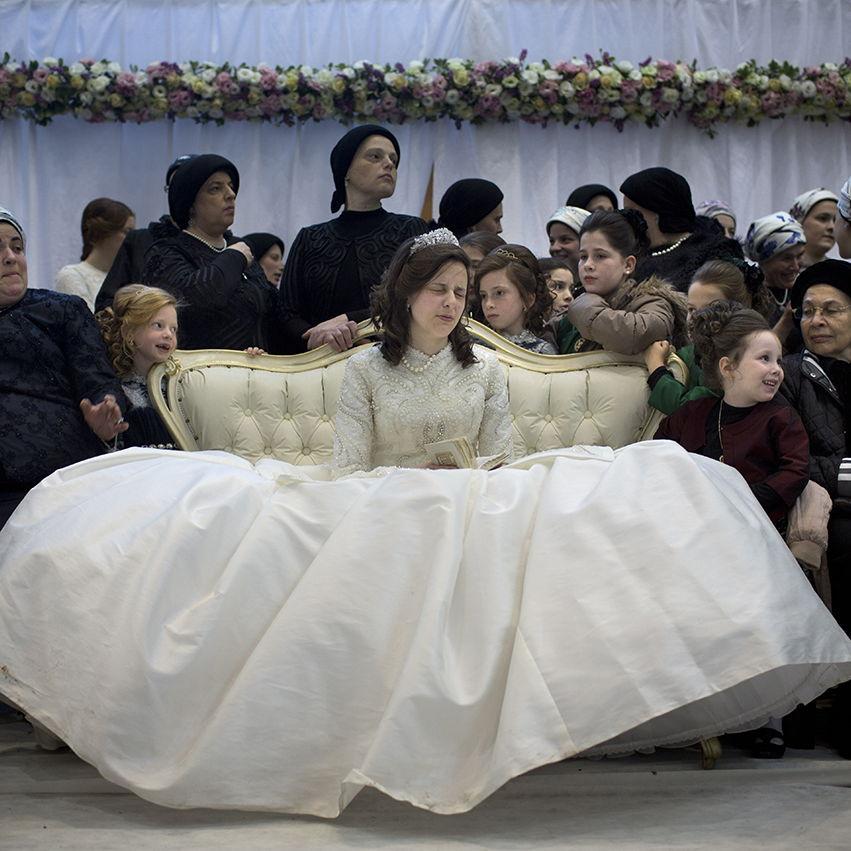
Kabbalat Panim
Welcoming of Guests
On the day of their wedding, the Kallah (bride) and Chatan (groom) are considered royalty, like a King and Queen! The bride and groom will hold two receptions. Kabbalat Panim, reception, or literally "the receiving of faces," will be Alexis' reception. Alexis will be seated in a throne like chair, surrounded by her mother, grandmother, and her bridesmaids. Friends and family of the Chatan and Kallah will come to greet us and ask for Brachot (blessings), as the prayers of the bride and groom are especially powerful on their wedding day.
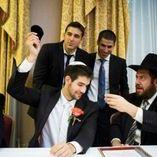
Tisch
Groom's Table
The word Tisch is a Yiddish word that literally means "table." The Tisch is also known as the Chatan's Tisch or groom's table. The Tisch ceremony receives its name from the table at which the Ketubah (wedding contact), the Tanaim (conditions of the wedding), and any state documents such as the license will be signed. Adam will be in a separate room at the Chatan’s Tisch, where our marriage will be celebrated and all of the necessary legal documents will be witnessed and signed. The actual Ketubah, or wedding contract, is signed at the Tisch by two Sabbath observing witnesses. The Ketubah will be officially accepted by Alexis under the Chuppah. This document is often a beautiful piece of art and reflects our commitment to each other.
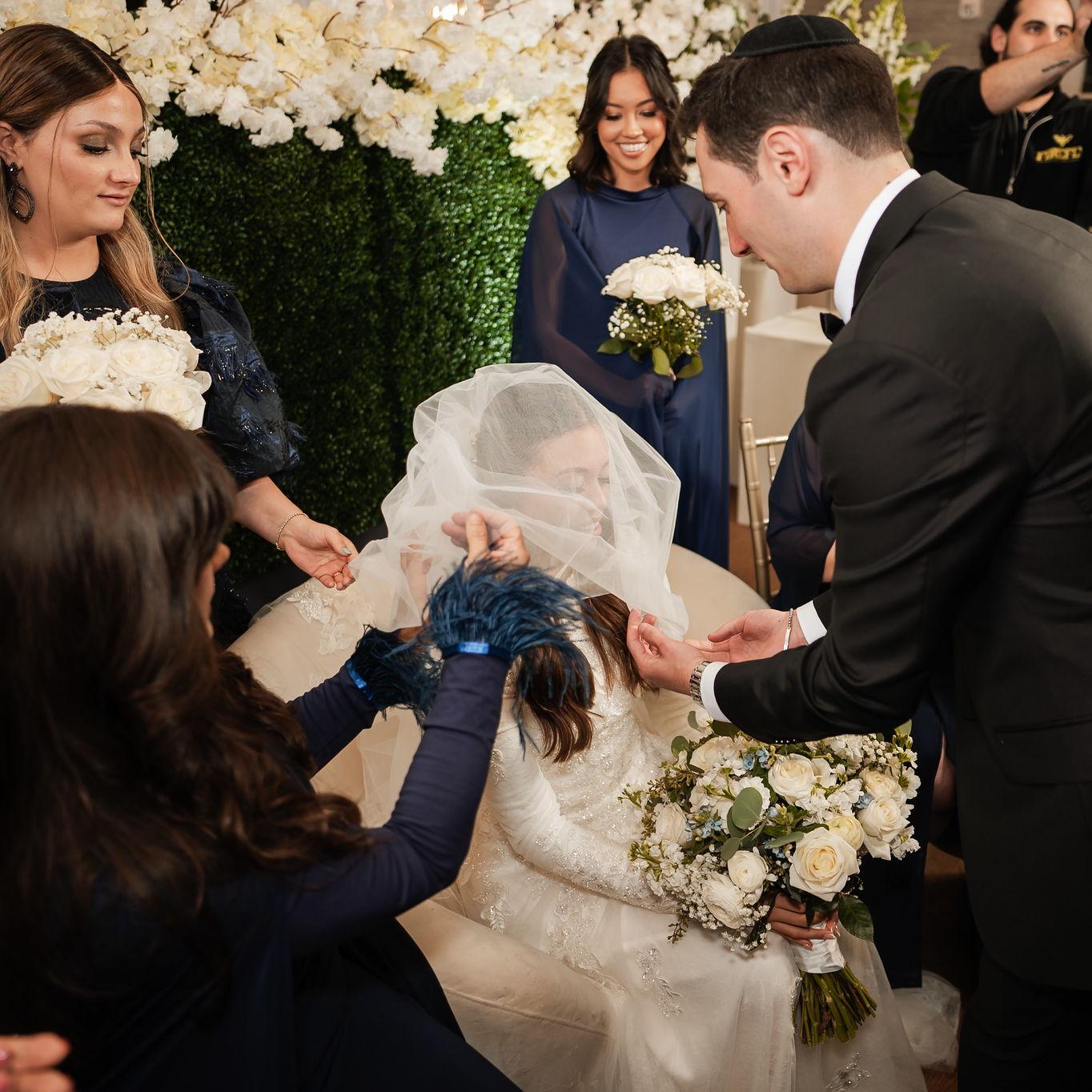
Bedeken
Veiling of the Bride
The Bedeken is a very joyous moment and a wonderful way to prepare for the more solemn ceremony that is about to come. When the Tisch is finished, the band is notified and they strike up a lively wedding tune. To conclude the Kabbalat Panim, Adam, accompanied by singing and dancing, will be escorted by a lively parade of guests to the area where Alexis is seated. Adam will place the veil over Alexis’s face, just as the Biblical matriarch Rivka (Rebecca) covered her face upon meeting her future husband, Yitzchak (Isaac). The veiling of his bride is viewed as a symbolic act of focusing on the inner beauty and qualities of the bride. It is a reminder that marriage is not only of a physical realm but of the spiritual as well.
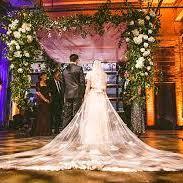
Chuppah
The Ceremony
The Chuppah is the structure or canopy that the ceremony is performed beneath. It is open on all sides to symbolize our new home together, much like Avraham (Abraham) and Sarah, whose tent was open on all four sides as a way to welcome guests. The ceremony then continues with Kiddushin, or sanctification. Following Rabbi Wolf’s recitation of the Brachot (blessings), Adam will declare in Hebrew: “With this ring you are sanctified to me in accordance with the laws of Moses and Israel.” By accepting the ring, Alexis indicates her consent to the marriage. Then, the Ketubah will be read aloud. The marriage concludes with the Nissuin, including recitation of the Sheva Brachot, or seven blessings. Psalm 137, “If I forget thee Jerusalem,” is recited, followed by Adam stepping on a glass, symbolizing mourning for the destruction of the Holy Temple in Jerusalem 2,000 years ago. This reminds us of the Jewish people's historical struggles even in moments of joy.
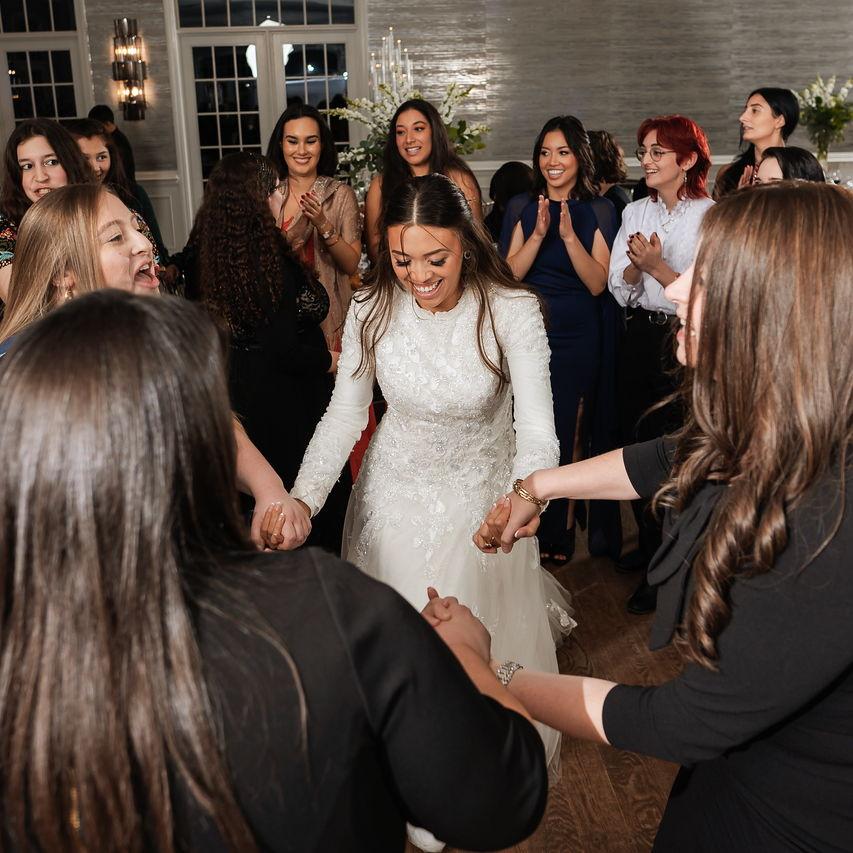
Seudat Mitzvah
Festival Meal & Dancing
Once the glass is shattered, the ceremony is complete, and it is customary for guests to rise from their seats in song and dance. They escort the Chatan and Kallah to the Yichud room, a place of seclusion. Here they spend their first few moments alone together as a married couple. It also symbolizes the absolute primary importance and sanctity of the marriage, regardless of who else is around them. Before the meal, we wash our hands with a special two handled washing cup, and recite a Bracha, a blessing. We then make a Bracha on Challah (festive bread) and begin the meal. There will be small booklets available at each table called Bentschers. These contain prayers and songs in both Hebrew and English, including Birkat Hamazon, a collection of blessings recited after eating bread. These are popular keepsakes, given out at many special occasions in the Jewish life cycle. There will be a Mechitza, a divider, on the dance floor where there will be separate sides for the men and women to dance. It is considered a Mitzvah, a commandment or good deed, to dance with the Chatan and Kallah on their wedding day, and to entertain them and make them happy!